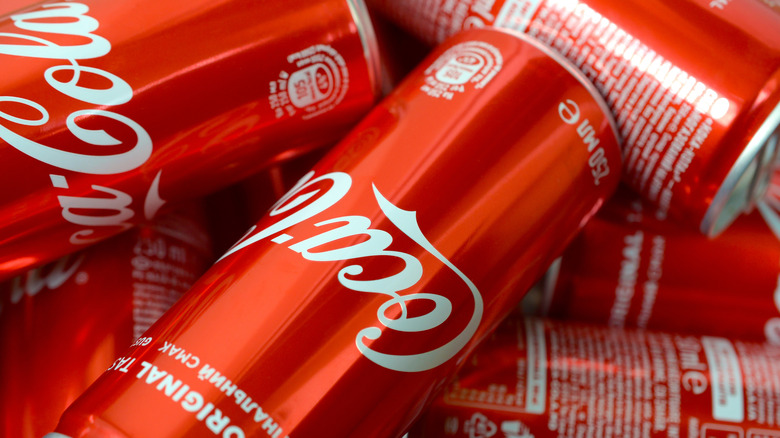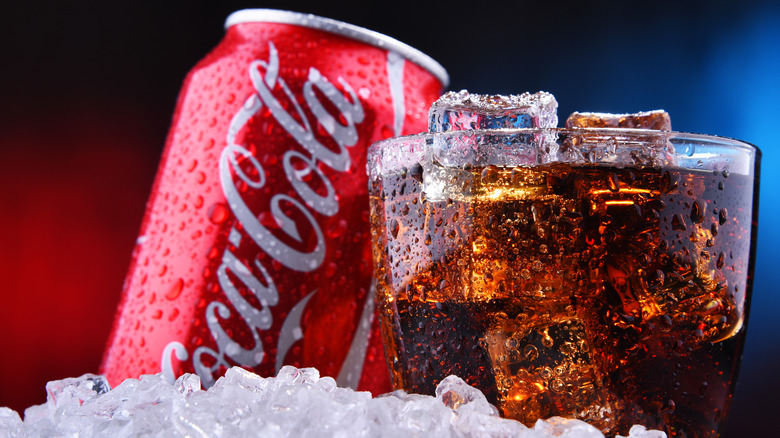How War Led To The Creation Of Coca-Cola Cans
War often leads to inventions and innovations that are later adopted for widespread civilian use (via USA Today). For instance, those built-in map apps on our phones that utilize GPS to help us navigate our towns and cities were initially developed by the U.S. Department of Defense in the 1960s. The Jeep that you drive to your GPS-guided destination was invented during World War II when the Army "had a need for a light reconnaissance vehicle."
The same can be said for some everyday commercial products that are now ubiquitous. One of those is the Coca-Cola aluminum can, which first emerged on the scene toward the end of World War II. At the beginning of the conflict in 1941, Robert Woodruff, then-president of Coca-Cola, made supplying the troops with his soda a top priority. He issued a directive "to see that every man in uniform gets a bottle of Coca-Cola for 5 cents, wherever he is and whatever it costs the Company."
Even U.S. Army General Dwight D. Eisenhower recognized the potential impact on morale. He contacted Coke executives and urged them to create bottling plants overseas to distribute the soda to troops, per Coffee or Die Magazine.
The evolution of canned Coke
As an iconic American symbol, soldiers not only enjoyed drinking the sweet beverage itself but often viewed it patriotically as a national drink (via Coffee or Die). It was seen as a connection to home and country, so critical that the Coca-Cola Company "wasn't subject to the same sugar rationing as the general public," according to The USO.
Not one to miss out on a marketing opportunity, Coca-Cola later capitalized on these sentiments in advertising campaigns. Coke derived the pull-top can container so they could be "shipped to armed forces overseas" (via Mental Floss). The idea was pragmatic enough, but "the materials needed were rationed during World War II and the company couldn't produce them for troops until the conflict ended." It wasn't until 1960 that aluminum Coca-Cola cans were introduced to the general public, this time more out of convenience than necessity.
Interestingly enough, the original can design depicted the "outline of a Coke bottle so customers wouldn't get confused" (via Insider). It would appear that people adapted just fine.

